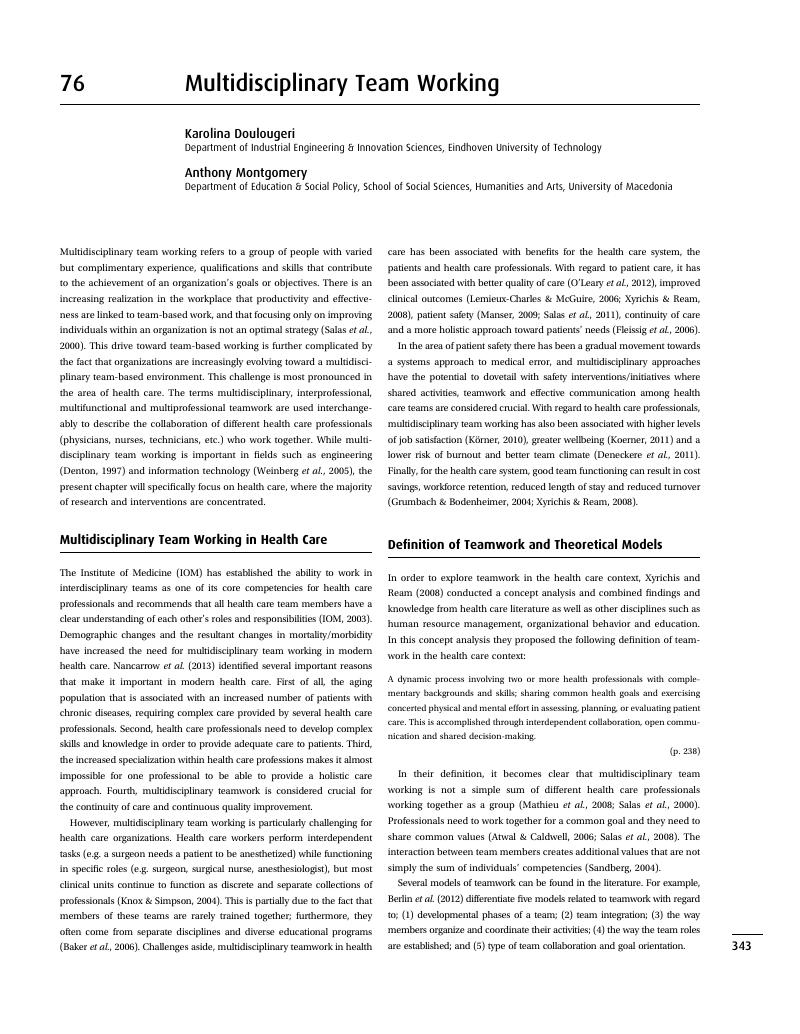76 - Multidisciplinary Team Working
from Theme 1: - Health Care Environment and Behaviour
Published online by Cambridge University Press: 05 June 2019
Summary

- Type
- Chapter
- Information
- Cambridge Handbook of Psychology, Health and Medicine , pp. 343 - 346Publisher: Cambridge University PressPrint publication year: 2019



